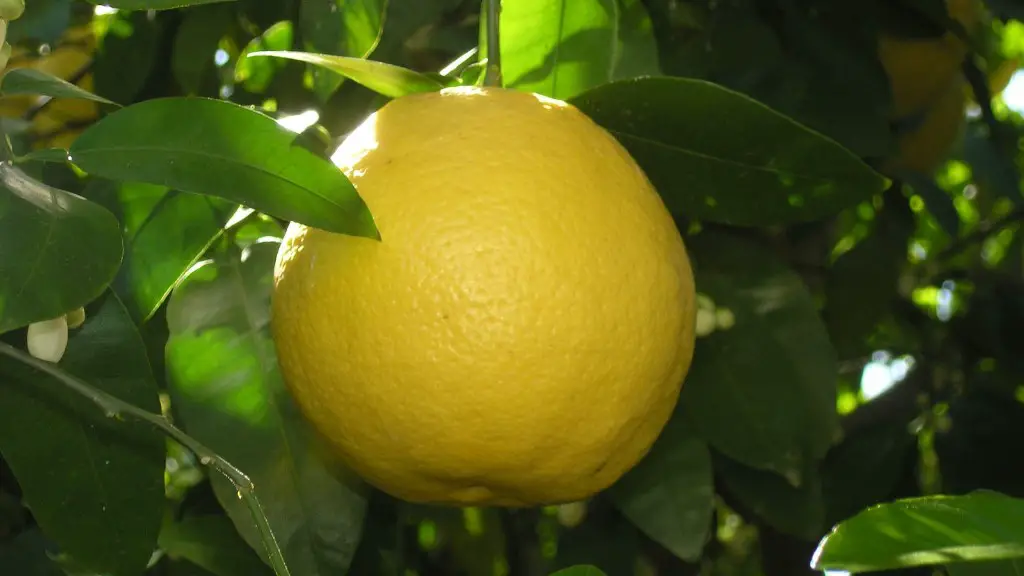For successfully growing a eureka lemon tree in a pot, it’s essential to first find a suitable pot, soil, and location. The pot should be big enough and have a drainage hole for water to escape. The soil should be well-drained and have a neutral pH level. And the location should preferably be somewhere sunny and warm. Next up, it’s important to mulch and water the tree regularly. The mulch will help regulate the temperature and inhibit weed growth, and the water should be given every couple of days, depending on the weather. Lastly, it’s essential to fertilize and prune the tree regularly. The fertilizer should be applied according to the product instructions, and the pruning should be done as needed to maintain the desired shape and encourage new, healthy growth.
Determine Appropriate Container
When growing a eureka lemon tree in a pot, the size of the container matters. Choose a pot that’s twice as wide as the current diameter of the roots, and at least a foot deep. Not only that, the pot should have good drainage, with several small holes at the bottom. Even the material of the pot matters – terracotta or wood can work, but plastic may be better since it holds in more moisture. Ensure the tree is securely rooted in the pot before replanting.
Prepare Soil Mixture
The soil plays an important role in determining the health of the tree. A mix of equal parts peat, coconut coir, and potting soil would do the trick here. You may want to further adjust the mix depending on the acidic and alkaline levels of the soil. A pH test can help determine the right ratio of ingredients. It’s also essential to use a soil that drains quickly and retains moisture without developing compaction.
Design Strategic Sunlight Exposure
A eureka lemon tree should be placed in an area with plenty of sun. During the winter, it should get as much as 8 hours of full exposure, and during the summer, it should get at least 6. If direct sunlight isn’t feasible, consider supplementing with grow lights.
Add Mulch To Retain Moisture
Mulch is a good way to keep the soil moist and curb weed growth. This is especially beneficial during the hot summer months, when the soil may dry out faster. Use a thick layer of mulch and be careful not to get any onto the leaves. As the mulch breaks down, it also adds essential nutrients to the soil.
Create A Watering Schedule
Since the tree is in a pot, you’ll need to do more frequent watering. During the summer, the tree should be watered two to three times a week and during the winter, once or twice. Keep an eye on the soil and look for signs of dryness – if the soil is too dry to the touch, it’s time to water. Make sure you’re not drowning the tree by not overwatering.
Feed Plants Regularly With Fertilizer
Fertilizer should be applied at least once a month, either with a liquid fertilizer or compost. Choose a fertilizer specifically designed for citrus fruit trees, as they’re known to need different nutrients. Pay attention to the directions of the particular product that’s being used and run a soil pH test to determine which mixed to use and when
Trim Branches judiciously
Pruning is another important component of caring for a eureka lemon tree. Prune away any dead, damaged, or diseased branches as well as any crossed or inward-growing branch. This will ensure the tree stays healthy and promotes new growth. Try not to prune more than 10-15% of the tree’s volume at any time.
Provide Regular Inspections
Check the tree regularly for any possible signs of disease. This includes inspecting the leaves and branches for any discoloration or blemishes. If any spots are spotted, treat the tree and check back daily. As needed, also remove any dead branches or leaves as part of the routine maintenance.
Fight Pests and Diseases early
Pests and diseases can significantly damage a tree if not promptly dealt with. This is especially relevant to a citrus tree. Signs of pests may include webbing, mold growth, or chewed leaves, while signs of disease may include yellowing of the leaves, orange spots, and wilting of the branches. If any of these symptoms show up, apply suitable pest control immediately to prevent further damage.
Maintain Regular Temperature
Finally, pay attention to the temperature of the spot in which the tree is kept. A eureka lemon tree can’t tolerate extremely hot temperatures, nor can it handle cold. Try to keep the temperature between 50 to 95 degrees Fahrenheit – too much colder or hotter and the tree may die.
